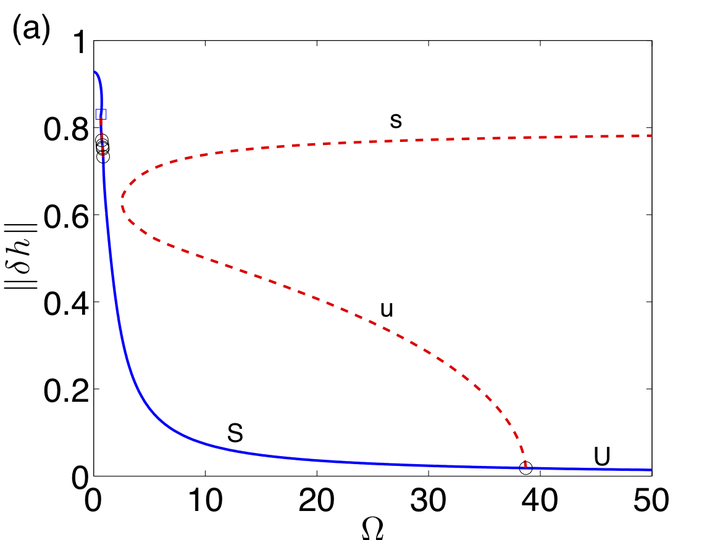
Abstract
We discuss the behavior of partially wetting liquids on a rotating cylinder using a model that takes into account the effects of gravity, viscosity, rotation, surface tension, and wettability. Such a system can be considered as a prototype for many other systems where the interplay of spatial heterogeneity and a lateral driving force in the proximity of a first- or second-order phase transition results in intri- cate behavior. So does a partially wetting drop on a rotating cylinder undergo a depinning transition as the rotation speed is increased, whereas for ideally wetting liquids, the behavior only changes quantitatively. We analyze the bifurcations that occur when the rotation speed is increased for several values of the equilibrium contact angle of the partially wetting liquids. This allows us to discuss how the entire bifurcation structure and the flow behavior it encodes change with changing wettability. We employ various numerical continuation techniques that allow us to track stable/unstable steady and time-periodic film and drop thickness profiles. We support our findings by time-dependent numerical simulations and asymptotic analyses of steady and time-periodic profiles for large rotation numbers.